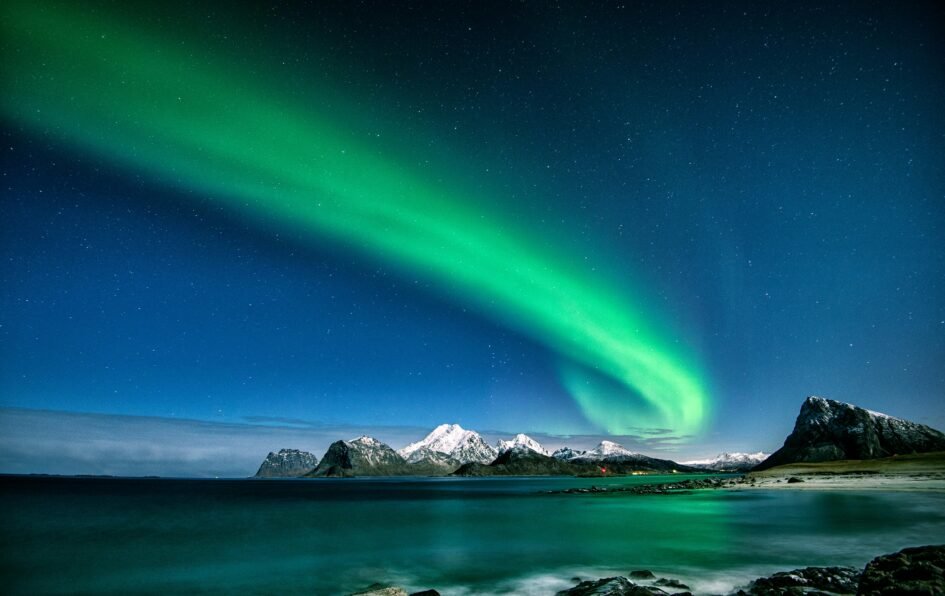Experiencing nature at night opens up a new perspective on the world around us. As daylight fades, the nocturnal symphony begins—offering a unique opportunity to connect with the often unseen and unheard life that stirs under the cover of darkness. This week’s challenge invites you to immerse yourself in the nocturnal environment and engage your senses in ways that daylight hours do not allow. Discover the enchanting world of nighttime nature to deepen your connection with the earth and expand your understanding of the natural cycles.
Instructions
Prepare for Nighttime Exploration
When planning to explore natural settings away from the immediate safety of your home, such as in remote parks or nature reserves at night, consider these essential safety and preparedness tips. Alternatively, if you choose to connect with nature closer to home, such as in your backyard, you should adapt these general tips to suit your specific needs
- Safety first. Always ensure you’re prepared with appropriate gear, know your surroundings, and have a way to navigate in the dark. Choose a safe and familiar natural area that you can visit at night, such as a nearby park, or a nature reserve that allows evening access.
- Stay on marked trails: To avoid getting lost, stick to clearly marked trails if you are in a park or nature reserve. Use a GPS or a physical map to help navigate unfamiliar areas.
- Inform someone. Always let someone know where you are going and when you expect to return, especially if you are venturing into remote areas or nature reserves at night.
- Stay charged. Ensure your mobile phone is fully charged before you head out. Consider carrying a portable charger if you plan to be out for an extended period.
- Carry proper lighting. Use a flashlight with a red filter to help preserve your night vision and minimize disturbance to wildlife. Also, consider carrying a backup light source in case your primary light fails.
- Dress appropriately. Temperatures can drop significantly at night, even in summer. Dress in warm, layered clothing appropriate for the night’s expected weather conditions.
- Bring essential gear: Besides lighting and warm clothing, bring water, snacks, a basic first aid kit, and if necessary, insect repellent.
- Be aware of wildlife: Understand the types of wildlife you might encounter in the area and know how to safely observe or react to them. Some animals are more active at night and may behave unpredictably.
- Respect nature: Keep noise to a minimum to enjoy the full auditory experience of nature at night and to avoid disturbing wildlife.
- Use the buddy system: Whenever possible, go with a friend. Exploring nature at night can be more enjoyable and much safer in pairs or groups.
- Check local regulations: Some areas have specific rules about accessing parklands or natural reserves at night. Always check local regulations and obtain any necessary permits.
Nature at Night Across the Seasons
Each season offers its own unique beauty and opportunities for connection with nature. Whether it’s the rejuvenating freshness of spring, the vibrant energy of summer, the rich transitions of autumn, or the quiet stillness of winter, there’s always a perfect activity to deepen your relationship with the natural world. Depending on the season, choose an activity that resonates with you and explore the changing landscapes and rhythms of the earth throughout the year. This mindful engagement with nature not only enriches your experience but also nurtures a deeper appreciation for the environment’s diverse offerings.
Spring
- Nighttime Bird Listening: Spring is a fantastic time to listen to nocturnal birds such as owls. Find a quiet spot to sit and listen, and you might also catch the first night songs of migrating birds.
- Frog and Toad Surveys: Many frogs and toads call more frequently at night during their breeding season in spring. Visit a local pond or wetland to experience this lively chorus.
- Stargazing: With clearer skies, spring offers great opportunities for stargazing. Watch for meteor showers or learn to identify spring constellations.
- Night Photography: Capture the beauty of spring blossoms and landscapes under moonlight, which can offer a new perspective and challenge to photography enthusiasts.
- Full Moon Walks: Organize or join a guided full moon walk to appreciate the nighttime environment under the light of the full moon, enhancing visibility and casting the landscape in a different light.
Summer
- Firefly Viewing: Summer evenings are perfect for observing fireflies. Their bioluminescent displays are magical and best enjoyed on warm, humid nights.
- Mothing: Set up a white sheet and a light in your backyard to attract and observe local moth species, a fun activity for all ages.
- Moonlit Grounding: If you have access to a tranquil outdoor space near water or in an open field, grounding yourself under the moonlight can be a profoundly serene and beautiful way to enjoy summer nights.
- Meteor Shower Viewing: Summer is known for some of the best meteor showers of the year, such as the Perseids. Find a dark spot and enjoy the show.
- Nighttime Beach Walks: Walk along the beach under the stars. The open horizon is perfect for stargazing, and the sound of the waves creates a relaxing backdrop.
Autumn
- Autumn Constellations and Planets Viewing: The cooler, clear nights of autumn are ideal for observing the night sky, including planets and stars.
- Autumn Wildlife Spotting: Explore the nocturnal behaviors of wildlife during autumn evenings. Set out at dusk to observe animals such as deer, raccoons, and owls becoming more active.
- Harvest Moon Celebration: Celebrate the Harvest Moon with a night of outdoor activities, such as a picnic or a small gathering with storytelling.
- Night Hiking: Experience the woods in a new way by hiking familiar trails at night, noticing how the cooler air brings different smells and sounds.
- Autumn Fireside Reflections: Enjoy a cozy evening by a fire under the moonlight. Reflect on the season’s change, enjoy the warmth, and immerse yourself in the soothing sounds of crackling wood.
Winter
- Winter Stargazing: Take advantage of the early nightfall and often clearer winter skies to observe stars, constellations, and visible planets.
- Nighttime Snowshoeing: If you’re in a snowy area, try snowshoeing or a quiet walk after a fresh snowfall. The snow reflects moonlight and sound, creating a serene, luminous landscape.
- Listening for Owls: Winter is a great time to listen for owls starting to stake out territory for nesting.
- Aurora Watching: For those at higher latitudes, winter nights offer the best chance to see the Northern Lights.
- Winter Solstice Celebration: Mark the longest night of the year with a celebration that might include a bonfire, outdoor cooking, and sharing stories or music.
After your nighttime exploration, take a moment to reflect on how this experience contrasts with your interactions with nature during the day. Bringing a journal along can be helpful to record your thoughts and feelings about the nighttime environment. Consider how the darkness influences your connection to nature and the emotions or thoughts that emerge. Contemplate how this unique setting can deepen your understanding and appreciation of the natural world. As you ponder these insights, think about how they might enrich your relationship with nature and influence your overall well-being.
*Photo: https://www.pexels.com/photo/northern-lights-1933320/





Leave a Reply